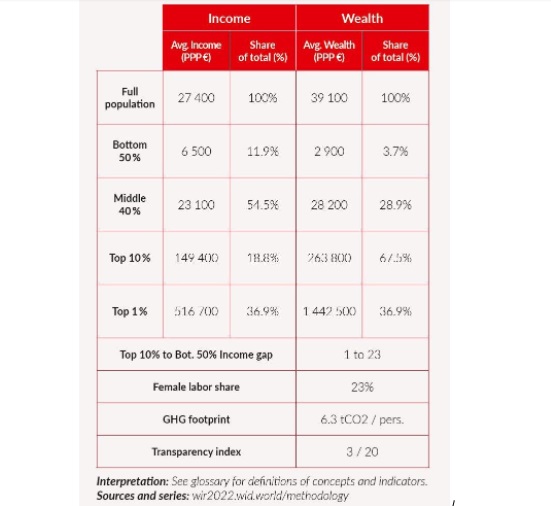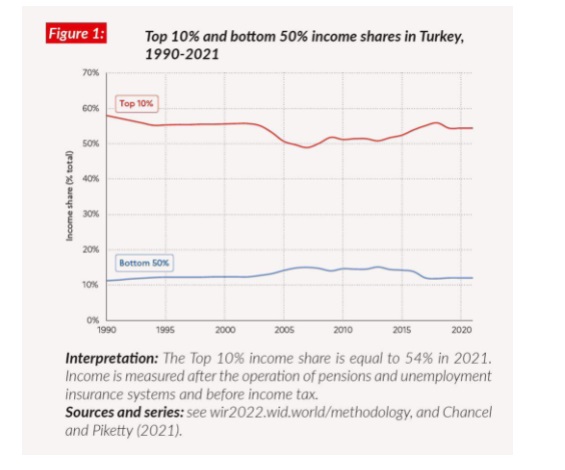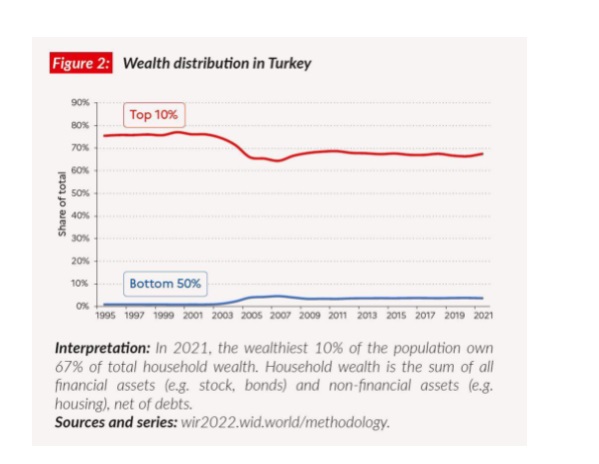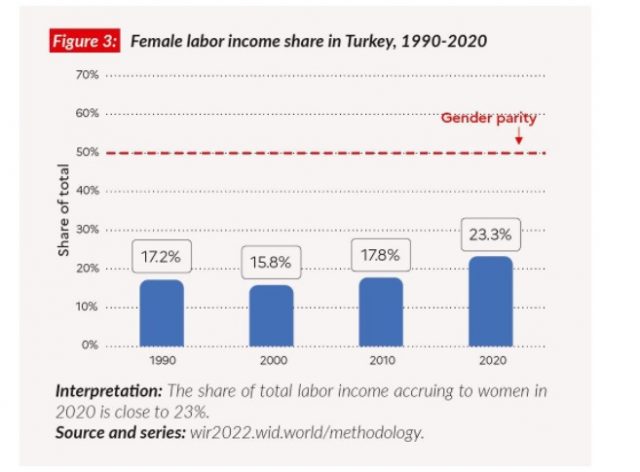World Inequality Report and Wealth Inequality in Turkey

In the World Inequality Report, prepared with the information provided by the World Inequality Database, income inequality and wealth inequality at the global level are examined separately, and both world-wide and country-specific analyzes are prepared. In this article, I will evaluate the findings on income, wealth and gender inequality in the world and in Turkey in particular.
The World Inequality Lab works with national and international statistical institutions, government financial units, universities, research centers and international organizations to standardize, analyze and report inequality data around the world. Within the framework of this study, the ‘World Inequality Database’ was created. The World Inequality Report is prepared every year with the information provided by this database.
In the report released this year, income inequality and wealth inequality at the global level were examined separately. Both worldwide and country-specific analyzes were prepared. In this article, I will evaluate the findings on income, wealth and gender inequality in the world and in Turkey in particular.
The wealthiest 10% of people worldwide have 52% of global income.
Global Inequality
To examine global income inequality, the incomes of the richest 10% and the poorest 50% worldwide are compared. The wealthiest 10% of people worldwide have 52% of global income. In contrast, the income of the broad masses in the poorest 50% accounts for only 8% of global income. Those in the first group have an average annual income of 87,200 Euros, while those in the poorest 50% have an average income of only 2,800 Euros.
Global inequality in wealth, which includes not only incomes but also savings, investments, and assets, is deeper. The share of those in the richest 10% of the world’s total wealth rises to 76%. The combined wealth of those in the poorest 50% is equivalent to just 2% of global wealth.
Average wealth figures bare the picture of inequality. Average wealth per capita for the top 10% minority is recorded as 550,900 euros, while this figure is only 2,900 euros for the poorest 50%. In other words, the average wealth of the richest is 197 times the wealth of the poorest. Since 1995, the wealth of those in the 10% tranche has grown at least 2 times more than the world average. According to the report, this inequality has grown even more during the pandemic.
Inequality in Turkey
According to the Gini coefficient index, which measures inequality, Turkey is the most unequal country in Europe (41.9) [1]. In recent years, while wealth transfer has taken place to the elites close to power, the purchasing power of the broad masses has decreased, and impoverishment has increased.

Those in the 10% richest quintile in Turkey have 54.5% of the country’s income. The total income of the poorest 50% is only 11.2% of the country’s income. The average income (in purchasing power parity) of the richest 10% reaches 149,400 euros, while this figure drops to 6,500 euros in the poorest 50%. The average income of the poorest is equivalent to 1/23 of the richest.
In Turkey, inequality is deepening mostly in terms of wealth. The top 10% hold 67% of the total wealth, while the poorest 50% only get 4%. While the average wealth of the 10% tranche rises to 263,800 euros, the average wealth of people in the poorest 50% is only 2,900 euros. Wealth per capita is exactly 91 times that of the bottom 50% in the top 10%.

Income inequality in Turkey decreased between 1990-2005. However, inequality has been on the rise for the last 15 years, as the AKP (Justice and Development Party) government chose to expand its sphere of control by creating its own economic elite rather than increasing consumer purchasing power. Although the share of the top 10% of income fell below 50% between 2005 and 2010, it seems to have reached 54% in 2021.

The inequality in wealth distribution in Turkey had decreased in the first term of the AKP. The share of the top 10% of the total wealth decreased from 75% to 60%, while the share of the poorest 50% reached 5% from 1%. The increase in wealth that the AKP provided to the lower and lower-middle income groups in its first term has been one of the biggest dynamics that paved the way for its rule for 19 years.
However, in the 10-year period after the 2008 crisis, Turkey’s falling into the middle-income trap with the declining economic performance of the AKP government, the gradual impoverishment of the lower and middle classes after the 2018 currency crisis, and wealth transfers to economic elites close to the AKP increased wealth inequality again.

Another area where inequality is seen is gender inequality in the distribution of income for labor. Like the Middle East countries, where women’s participation in socio-economic life remains low due to cultural reasons, Turkey lags behind the world average in this regard. In the last 10 years, the share of women in total income in return for labor has only reached 23.3%. In order to understand how low this rate is, it should be emphasized that in neighboring Bulgaria, which has a similar average income to Turkey, the share of women in total income reaches 43%.
Conclusion
With the pandemic, inequality has become more visible in the world, both between countries and at the social level. Turkey is no exception in this regard. Especially after the 2010s, while the purchasing power of the people decreased, inequality increased with the wealth transfers made to the economic elites close to the government. As a result of this, inequality in Turkey became more pronounced in the field of wealth rather than income. While the average income of the top 10% is measured as 23 times that of the poorest 50%, this figure is 91 in wealth. Another issue where inequality is felt most deeply in Turkey is gender inequality. In Turkey, women can only get 23% of the total income in return for their labor. In summary, while welfare decreases in Turkey, inequality is deepening in many areas.


Bizi Takip Edin